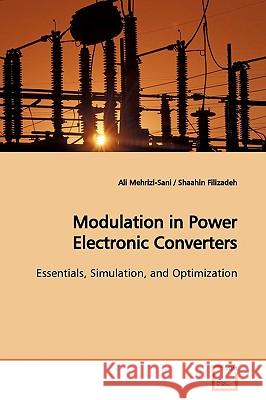Modulation in Power Electronic Converters » książka
Modulation in Power Electronic Converters
ISBN-13: 9783639147858 / Angielski / Miękka / 2009 / 152 str.
Pulse width modulation methods are widely used for the synthesis of ac voltages at the terminals of a voltage-sourced converter (VSC). Traditionally sinusoidal pulse width modulation (SPWM) has been used. A powerful alternative is space vector modulation (SVM), in which the converter is placed in a finite number of states in order to best approximate the reference voltage. The primary objective of this book is to provide a solid framework for advanced modulation techniques for high power applications. This book reviews the pulse width modulation techniques, studies the SVM method for two- and three-level VSCs, and features an extensive bibliography. It also develops simulation models for a number of modulation strategies, studies and compares the losses associated with modulation, presents a number of case studies, and employs genetic algorithms to find an optimized SVM sequence for improved harmonic performance. This book is intended for use by graduate students in power electronics and power systems and both new and experienced engineers as a comprehensive reference for modulation strategies.
Pulse width modulation methods are widely used forthe synthesis of ac voltages at the terminals of avoltage-sourced converter (VSC). Traditionallysinusoidal pulse width modulation (SPWM) has beenused. A powerful alternative is space vectormodulation (SVM), in which the converter is placed ina finite number of states in order to bestapproximate the reference voltage.The primary objective of this book is to provide asolid framework for advanced modulation techniquesfor high power applications. This book reviews thepulse width modulation techniques, studies the SVMmethod for two- and three-level VSCs, and features anextensive bibliography. It also develops simulationmodels for a number of modulation strategies, studiesand compares the lossesassociated with modulation, presents a number of casestudies, and employs genetic algorithms to find anoptimized SVM sequence for improved harmonic performance.This book is intended for use by graduate students inpower electronics and power systems and both new andexperienced engineers as a comprehensive referencefor modulation strategies.











